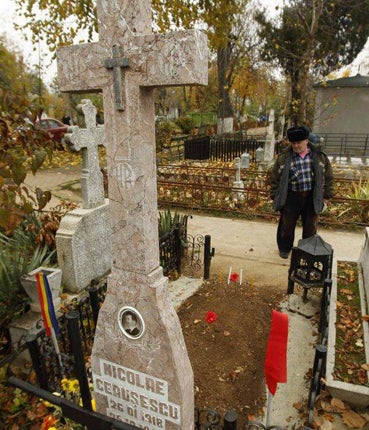Tests confirm grave contains Ceausescu's remains

DNA tests have confirmed that a body exhumed at a cemetery in Bucharest is that of the late Romanian dictator, Nicolae Ceausescu.
Ceausescu ruled Romania from 1965 until he and his wife, Elena, were captured and shot by a hastily assembled firing squad on Christmas Day in 1989 while fleeing the mass protests which marked the fall of communism in the country.
They were executed at an army base near the town of Targoviste and the bodies were buried without fanfare, causing many Romanians and surviving family members to doubt whether the graves in Bucharest really contained the dictator's remains.
Dan Dermengiu, the head of Romania's forensic institute, said: "The DNA from his brother and his son show that it is Nicolae Ceausescu."
The family had threatened to sue the Romanian state if the remains – exhumed on 21 July – had not belonged to the Ceausescus. But Mr Dermengiu said in the case of Elena, there was not enough material available for a conclusive test. The remains of the Ceausescus were exhumed in response to requests from the couple's daughter, Zoia, who died of lung cancer in 2006, her husband, Mircea Oprean, and Ceausescu's son, Valentin.
Mr Oprean was quoted by local media as saying he saw his father-in-law's coat riddled with bullets. "After what I saw, I tend to believe they are them," he said of the remains.
Zoia Ceausescu first asked for the identities of the bodies to be checked soon after the executions but the process was delayed for years as it proceeded through Romania's bureaucratic legal system after the 1989 revolution.
Join our commenting forum
Join thought-provoking conversations, follow other Independent readers and see their replies
Comments